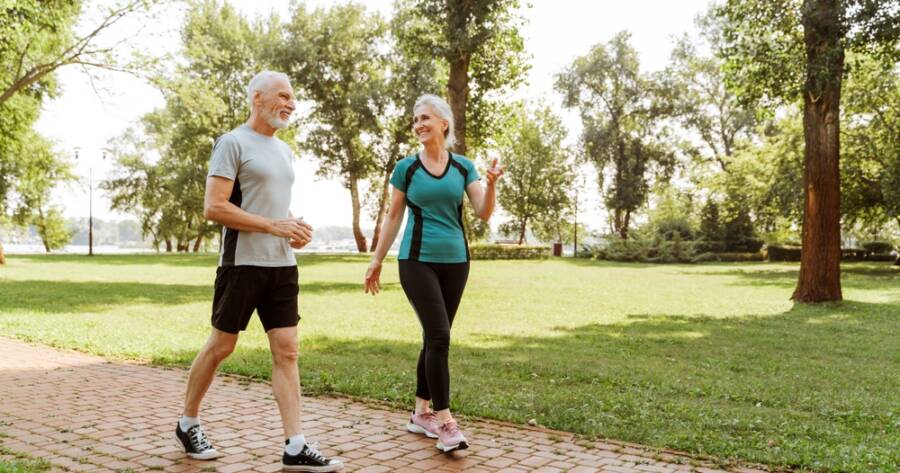Sometimes, the simplest movement is the most powerful. Walking doesn’t require equipment, training, or a gym membership, just your body and a bit of time. It strengthens your heart, boosts your mood, and clears your mind, all at a natural rhythm that’s easy to maintain. Beyond fitness, walking reconnects you with the world around you. Each step offers a pause, a breath, and a reminder that wellness doesn’t have to be complicated.
A Gentle Boost for Heart and Body
Walking is one of the easiest ways to support cardiovascular health. It increases circulation, strengthens the heart, and improves endurance without putting stress on joints. Regular brisk walks can help lower blood pressure, manage cholesterol, and reduce the risk of heart disease — benefits often associated with more intense exercise.
Even at a moderate pace, walking activates major muscle groups, tones the legs and core, and keeps the body agile. The low-impact nature makes it suitable for nearly every age and fitness level. It’s movement that heals rather than strains, and its accessibility is what makes it such a powerful lifelong habit.
Walking for Mental Clarity and Calm
Walking isn’t just physical — it’s profoundly mental. The repetitive rhythm of your steps helps calm an overactive mind, encouraging a natural meditative state. Studies show that walking reduces stress hormones, improves mood, and enhances creative thinking. With every stride, tension begins to release, and your thoughts start to organize themselves more clearly.
Even short walks during the workday can reset focus and energy. Taking your walk outdoors, especially in green spaces, amplifies the effect — exposure to nature lowers anxiety and boosts emotional balance. Walking becomes more than movement; it’s mental maintenance, giving you the space to think, breathe, and return to yourself.
A Sustainable Path to Fitness
Many exercise routines are intense but hard to sustain. Walking, on the other hand, fits seamlessly into daily life. Whether it’s a morning stroll, an evening cooldown, or a lunchtime walk, consistency matters more than intensity. Because walking feels effortless, it’s easier to do often — and frequency is where real change happens.
The best part? It’s adaptable. You can increase pace for a cardio boost, add hills for strength, or simply enjoy a slow, mindful pace. Over time, even gentle daily walks improve metabolism, joint mobility, and overall stamina — proving that sustainability often beats speed in the journey to better health.
The Power of Walking Outdoors
Stepping outside for a walk engages more than just your muscles — it engages your senses. Natural light regulates your circadian rhythm, helping improve sleep quality, while fresh air enhances oxygen flow and energy levels. The simple act of looking at open space also relaxes the visual system, easing eye strain from screens.
Outdoor walks provide perspective. Whether you’re wandering through a park or around the block, the shift in scenery interrupts repetitive thoughts and helps ground you in the present moment. A few minutes under the sky can restore calm in ways that indoor routines rarely match.
Walking as Connection and Community
Walking can be a solitary meditation or a social ritual. Shared walks (with friends, family, or coworkers) deepen relationships and bring conversation into motion. The relaxed pace allows space for genuine connection, making it one of the simplest ways to bond without distraction.
Even walking alone connects you to the world. You notice sounds, textures, and the quiet pulse of daily life that often goes unseen. This sense of connection, to others, to the environment, to yourself, is part of walking’s quiet power. It nourishes both the body and the spirit in equal measure.
Using Walking as a Mindful Break
A short walk can be the perfect reset during stressful or sedentary days. Stepping away from your desk or phone breaks the cycle of overstimulation, allowing your nervous system to rest. Pairing your walk with deep breathing or awareness of your surroundings turns it into a moving meditation.
Even a five-minute walk can lift your mood and reduce fatigue. The key is intention — treating each walk as an opportunity to refresh rather than just to move. Over time, these mindful breaks become an anchor of balance woven naturally into your routine.
Step by Step Toward Wellness
Walking proves that wellness doesn’t have to be extreme to be effective. A few steps can lift your mood, strengthen your body, and center your mind — no gym, no schedule, no pressure. The simplicity is what makes it powerful. Each walk is a chance to breathe deeper, think clearer, and move forward in every sense of the word. When life feels complex, returning to something as basic as walking can remind you that balance is often just a few steps away.

